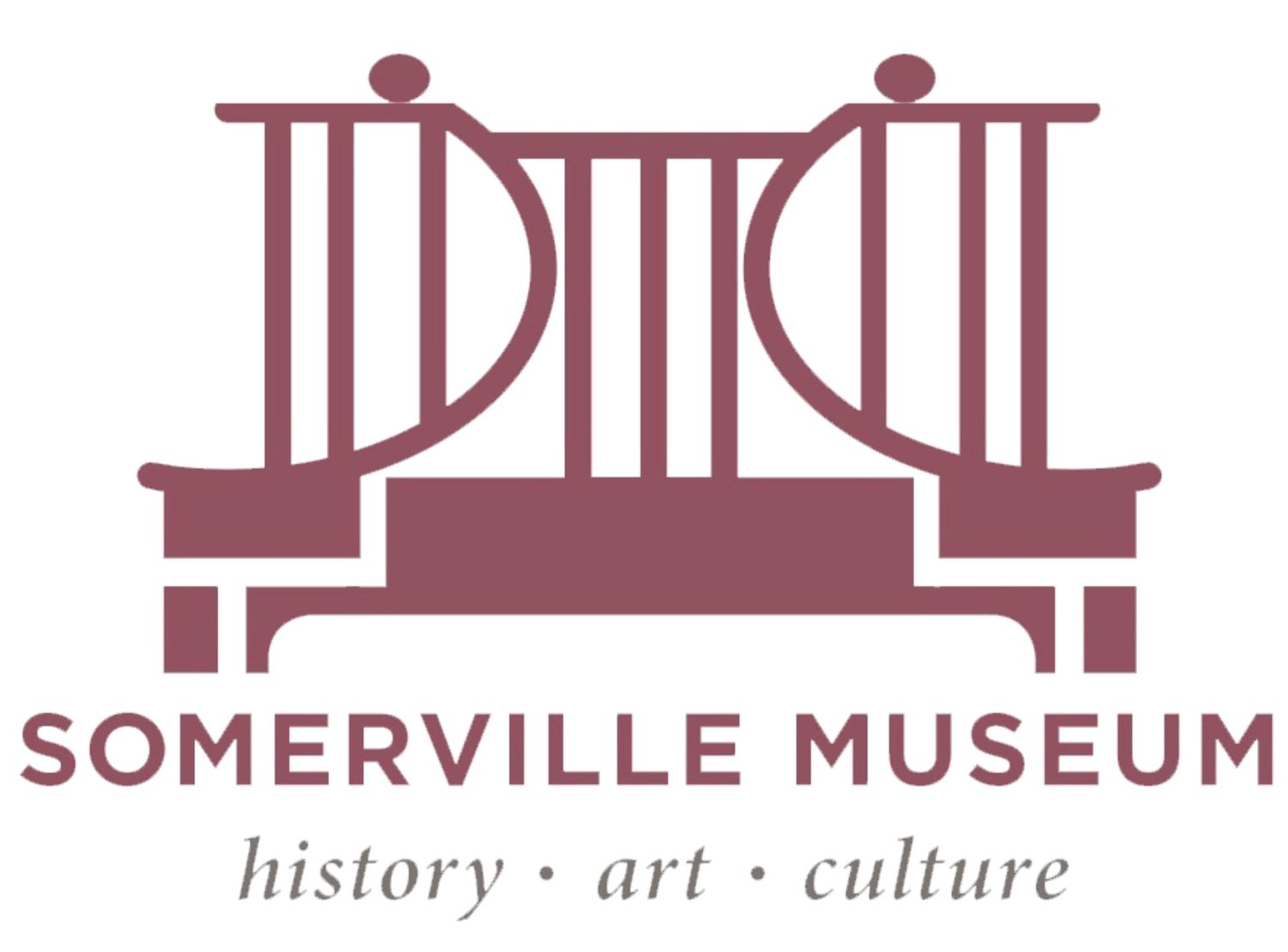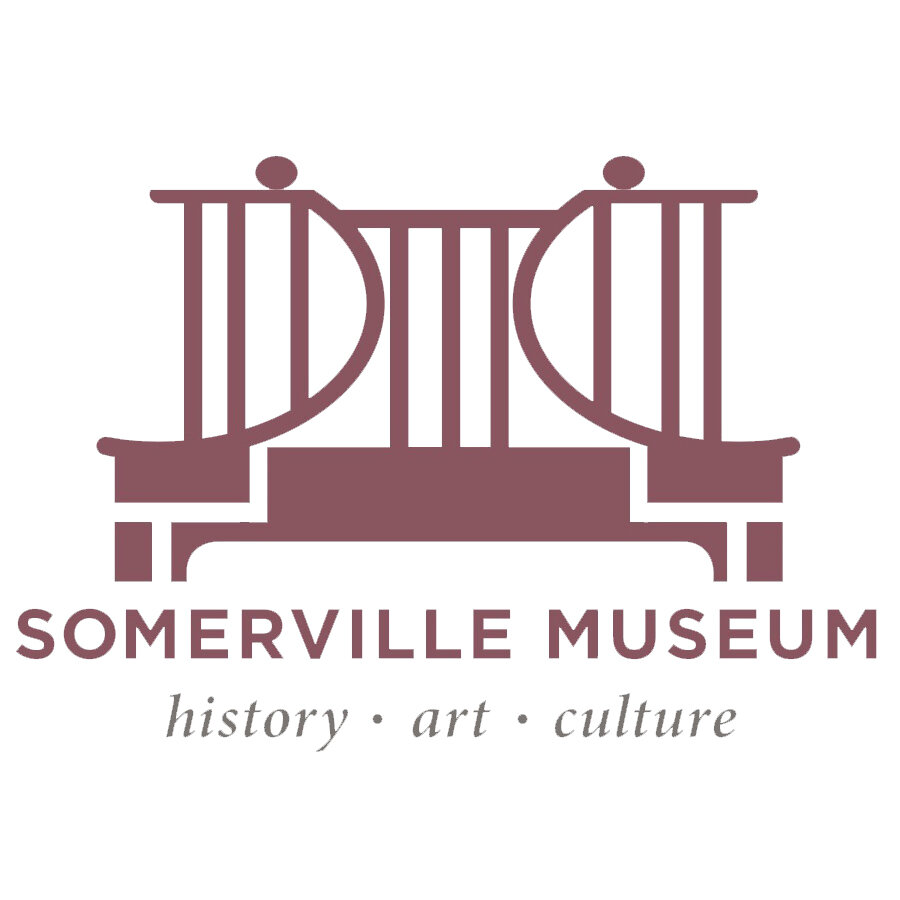Penny Chronicles and the Stories They Tell
Film by Pier Gustafson. Animated film inspired by the opening of the Somerville Museum exhibition, Penny Chronicles and the Stories They Tell, by curator David Guss.
Read more press about Penny Chronicles here.
September 9, 2021-January 8, 2022 | Curated by David Guss
They cost a penny to buy and a penny to send. They were the social media of their day, snippets of news attached to images of local buildings, monuments, and events. Big pictures in a small frame, serving as testimonies to one’s pride of place. Strung together, they tell Somerville’s unique history: a visit from a president, the impact of suffragettes, veterans marching, monuments dedicated, developers building rows of new homes.
The postcard, that popular and resilient art form that announced the arrival of the 20th Century and with it, a new way of seeing will be the star of this irreverent and surprising history of Somerville. While inspired by the postcard, “Penny Chronicles” is by no means limited to it. Organized into 18 sections, each ‘episode’ presents the postcard and accompanying material in a distinctive manner, carefully linking the reality of the original postcard – 100 plus years ago – to the social discourse of today. In the first panel, for example, the story of President Taft’s historic visit to Somerville on July 4, 1910 is told alongside that of Jack Johnson’s championship fight on the same day in Reno, Nevada when, following Johnson’s victory, race riots took place throughout the country. In other sections, the struggle for open space in one of the nation’s most densely populated cities is tied to current conflicts surrounding housing and development. Long simmering debates around mass transit and urbanization are also revived with the imminent arrival of the Green Line, which while making room for some, is displacing others.
In addition to recently discovered treasures from the Museum’s archives, “Penny Chronicles and The Stories They Tell” also features exciting new work by a varied group of artists commissioned especially for this exhibit. Among them is lifelong Somerville resident and photographer Henry Cataldo, who has created an eye-opening series of photographs comparing current Somerville streetscapes with those of a hundred years ago. Ceramicist Kingsley Weihe, on the other hand, is focusing on a single structure: visionary Enoch Robinson’s Round House. Her detailed portrait of this extraordinary building as a giant cookie jar is as wonderfully playful as it is technically brilliant. Textile artist Kyle Huffman will create the centerpiece of the show, the axis mundi around which every element revolves. Although Huffman’s Powder House will be made of wicker, it will be easily recognized as the city’s most iconic and endearing landmark. A second piece created by Huffman will form part of the exhibit’s final panel, entitled “How To Fold a Flag.” Worn by suffragettes and other protesters leading up to the First World War, Huffman’s reimagined flag dress remains as charged today as it was a hundred years ago. The work of artist Pier Gustafson will explore another area of social justice, this one pertaining to gender inequities found throughout our education system. Stunned by the fact that in the history of Somerville only one school has ever been named for a woman, we decided to create three new ones, each honoring a remarkable individual for whom an institution should have already been dedicated. To support their existence, Gustafson is slyly creating a set of postcards for each one. Other collaborators in this multi-vocal narrative are the students from Somerville High School’s award-winning Local History Club who are creating their own programming for the show.
Related Programming
Curator Tour: Saturday, September 11 | 12–1:30pm | $10 admission fee; free to Museum members
Join curator, David Guss, as he welcomes the community to explore Somerville’s past.
Opening Reception + Block Party: Saturday, 9/18 | 3–7pm | $5 admission fee; free to Museum members
Join us for a Block Party event celebrating both the opening of this long awaited exhibition and our Access for All & More Capital Campaign.
Lecture Series: Thursdays | 6:30–7:30pm | $10 admission fee; free to Museum members
These will be a mix of in-person and virtual events.
Thursday, November 4 | 6:30pm: Heaven’s Hardware: The Roundhouse and the Architecture of Hope
In-person event with Rhett Butler
Wednesday, November 17 | 6:30pm: The Most Glorious Fourth: ‘President Taft Comes to Somerville, July Fourth 1910’
In-person event with Dan Breen + Curator, David Guss
Thursday, January 6, 2022 | 6:30pm: TBD (zoom event)
Kids Craft Event at SomerStreets: Sunday, 10/31 2–6pm | Postcard making event for kids + adults
CANCELLED Postcard Show & Sale: Saturday, 12/18 | 12-4pm
Unfortunately, this event has been cancelled. However, the Museum will be open this day for regular hours from 12-5pm.
Closing Reception: Saturday, 1/8 | 12-2pm | $5 admission fee; free to Museum members
Tickets + Admission*
$5 admission to exhibit; $10 admission to special events; both free to Museum members, unless otherwise specified.
Tickets can be purchased at the Museum. The Museum will be monitoring local and state COVID -19 health + safety regulations and reserves the right to limit the amount of people in the space at one time.
Museum Hours During Exhibit: Thursdays 2–7pm, Fridays 2–5pm, Saturdays 12–5pm
*Admission fees benefit the operations of the Somerville Museum and programs like this.
About David Guss
David Guss is a member of the Somerville Museum Board of Trustees. He is also Professor Emeritus at Tufts University Department of Anthropology. He is a writer, scholar, researcher, poet, folklorist, organizer, performer, and dancer. A specialist in Latin America, festivals, rituals, and performances, David has conducted research in many parts of Latin America and the United States.
In 1976, he began a decade-long project with Venezuela’s Yekuana Indians in the headwaters of the Orinoco. His next project explored the ways festive behavior is used to negotiate and constitute identity. This book, The Festive State: Race, Ethnicity, and Nationalism as Cultural Performance established him as one of the world’s leading authorities on festive behavior. In 1994, he extended this research to Bolivia where, in another decade-long study, he looked at intersections of colonialism, placemaking, and festive forms in the largest indigenous celebration in the Americas. Contact him at: David.Guss@Tufts.edu
This program is made possible by a grant from Mass Humanities, partnership with the Massachusetts Cultural Council.
This exhibition has been made possible in part by a grant from the National Endowment for the Humanities NEH Cares grant. Any views, findings, conclusions or recommendations expressed in this exhibition and programming do not necessarily represent those of the National Endowment for the Humanities.
This program is supported in part by a grant from the Somerville Arts Council, a local agency supported by the Massachusetts Cultural Council.


![September 9, 2021-January 8, 2022 | Curated by David GussThey cost a penny to buy and a penny to send. They were the social media of their day, snippets of news attached to images of local buildings, monuments, and events. Big pictures in a small frame, serving as testimonies to one’s pride of place. Strung together, they tell Somerville’s unique history: a visit from a president, the impact of suffragettes, veterans marching, monuments dedicated, developers building rows of new homes. The postcard, that popular and resilient art form that announced the arrival of the 20th Century and with it, a new way of seeing will be the star of this irreverent and surprising history of Somerville. While inspired by the postcard, “Penny Chronicles” is by no means limited to it. Organized into 18 sections, each ‘episode’ presents the postcard and accompanying material in a distinctive manner, carefully linking the reality of the original postcard – 100 plus years ago – to the social discourse of today. In the first panel, for example, the story of President Taft’s historic visit to Somerville on July 4, 1910 is told alongside that of Jack Johnson’s championship fight on the same day in Reno, Nevada when, following Johnson’s victory, race riots took place throughout the country. In other sections, the struggle for open space in one of the nation’s most densely populated cities is tied to current conflicts surrounding housing and development. Long simmering debates around mass transit and urbanization are also revived with the imminent arrival of the Green Line, which while making room for some, is displacing others.In addition to recently discovered treasures from the Museum’s archives, “Penny Chronicles and The Stories They Tell” also features exciting new work by a varied group of artists commissioned especially for this exhibit. Among them is lifelong Somerville resident and photographer Henry Cataldo, who has created an eye-opening series of photographs comparing current Somerville streetscapes with those of a hundred years ago. Ceramicist Kingsley Weihe, on the other hand, is focusing on a single structure: visionary Enoch Robinson’s Round House. Her detailed portrait of this extraordinary building as a giant cookie jar is as wonderfully playful as it is technically brilliant. Textile artist Kyle Huffman will create the centerpiece of the show, the axis mundi around which every element revolves. Although Huffman’s Powder House will be made of wicker, it will be easily recognized as the city’s most iconic and endearing landmark. A second piece created by Huffman will form part of the exhibit’s final panel, entitled “How To Fold a Flag.” Worn by suffragettes and other protesters leading up to the First World War, Huffman’s reimagined flag dress remains as charged today as it was a hundred years ago. The work of artist Pier Gustafson will explore another area of social justice, this one pertaining to gender inequities found throughout our education system. Stunned by the fact that in the history of Somerville only one school has ever been named for a woman, we decided to create three new ones, each honoring a remarkable individual for whom an institution should have already been dedicated. To support their existence, Gustafson is slyly creating a set of postcards for each one. Other collaborators in this multi-vocal narrative are the students from Somerville High School’s award-winning Local History Club who are creating their own programming for the show.Related ProgrammingCurator Tour: Saturday, September 11 | 12–1:30pm | $10 admission fee; free to Museum members Join curator, David Guss, as he welcomes the community to explore Somerville’s past. Opening Reception + Block Party: Saturday, 9/18 | 3–7pm | $5 admission fee; free to Museum members Join us for a Block Party event celebrating both the opening of this long awaited exhibition and our Access for All & More Capital Campaign. Lecture Series: Thursdays | 6:30–7:30pm | $10 admission fee; free to Museum members These will be a mix of in-person and virtual events. Thursday, November 4 | 6:30pm: Heaven’s Hardware: The Roundhouse and the Architecture of HopeIn-person event with Rhett ButlerThursday, January 6, 2022 | 6:30pm: TBD (zoom event)Kids Craft Event at SomerStreets: Sunday, 10/31 2–6pm | Postcard making event for kids + adults Postcard [Trade] Show: Saturday, December 18 | $5 admission fee; free to Museum members Postcard show exchange for the community. Closing Reception: Saturday, 1/8 | 12-2pm | $5 admission fee; free to Museum members Tickets + Admission* $5 admission to exhibit; $10 admission to special events; both free to Museum members, unless otherwise specified. Tickets can be purchased at the Museum. The Museum will be monitoring local and state COVID -19 health + safety regulations and reserves the right to limit the amount of people in the space at one time.](https://images.squarespace-cdn.com/content/v1/60ba5dd609bab714d2a38939/1629747728281-59NUSCT736IKKX8E4UK7/post-car-back-10-copy-1024x646.jpg)

